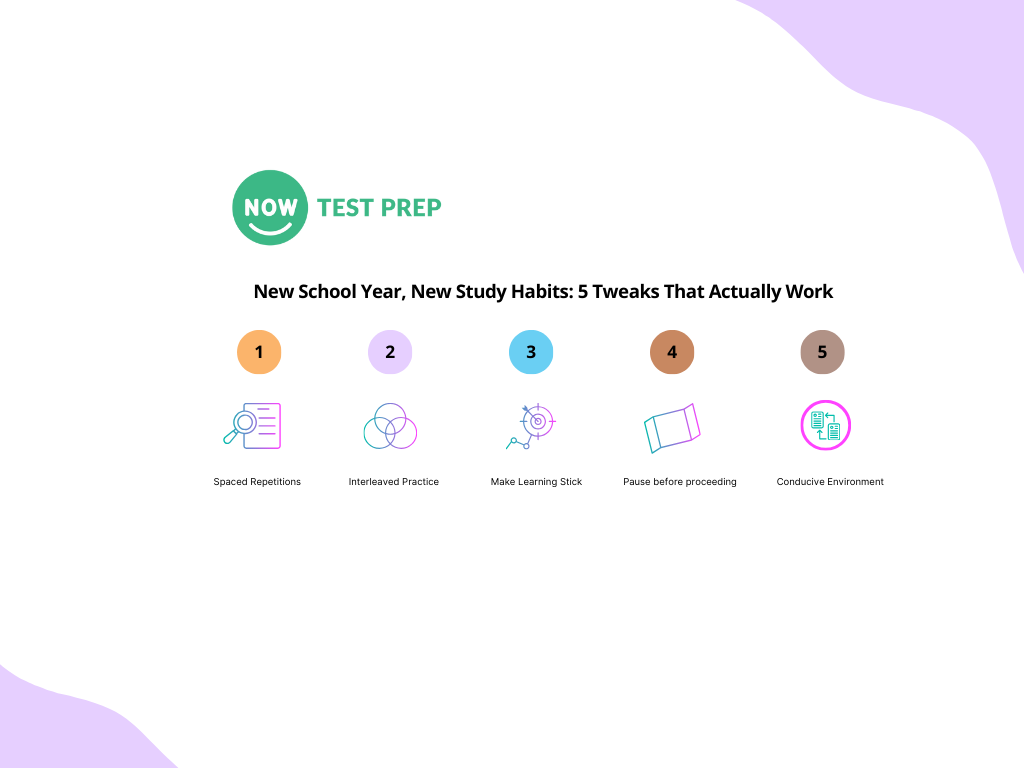Memory That Sticks: Using Keywords, Mnemonics, and Mental Imagery to Learn Faster and Recall Better
Have you ever watched your child belt out every lyric to their favorite song—but struggle to remember a single science term for tomorrow’s quiz? Haven’t you probably done the same? You’re not alone. It’s not that they aren’t trying hard enough or focusing—it’s just that some information sticks better than others.
The good news? There’s a science to making things memorable. With a few simple strategies—like using mnemonics, keywords, and mental imagery—even the trickiest facts can become easier (and actually fun) to remember. And no, these aren’t just for “gifted” kids or memory champions. These tools are easy to use, surprisingly effective, and rooted in solid research.
What Are Keywords and Mnemonics (And Why Do They Work)?
Let’s start with a story. Imagine your child is learning the French word “la dent” (which means tooth). They picture a dentist holding a giant molar. The word dentist sounds like la dent, and the mental image helps cement the meaning.
That’s called a keyword mnemonic. It works by creating a bridge between a foreign word (or fact) and something familiar and visual, usually a sound-alike word in English. Studies show students who use this technique remember more and retain it longer than students who just reread or copy notes.
The idea is simple:
- Find a keyword that sounds like the new word
- Create a vivid mental image that connects the keyword to the meaning
- Practice recalling it
Keywords, Imagery & Mnemonics Are Not Just for Language Learning
The keyword method has helped students remember:
- State capitals (e.g., imagining Abraham Lincoln surfing in Nebraska 🏄♂️ for Lincoln, Nebraska)
- SOHCAHTOA to teach the trigonometry functions sine, cosine, and tangent
- “Happy Henry Lives Beside Boron Cottage” to memorize the order of the first 6 elements
It’s especially effective for younger learners or students who struggle with traditional memorization. Why? Because it turns abstract concepts into concrete, visual, and often funny stories that stick.
Real-Life Example: Let’s Talk Planets
Want to help your child memorize the order of planets from the sun? Try this classic mnemonic:
- "My Very Educated Mother Just Served Us Nachos" - Each word stands for: Mercury, Venus, Earth, Mars, Jupiter, Saturn, Uranus, Neptune. That sentence is easier to remember than the names on their own, right? That’s the power of pattern + story.
When These Strategies Work Best
- When students are learning new vocabulary or definitions
- When material is keyword-friendly (concrete nouns work better than abstract ideas)
- When students are encouraged to create their own images or stories
- When used alongside other techniques like practice testing or summarizing
For Students: How to Try It
- Choose a tricky term. Let’s say you’re learning “mitochondria” (the powerhouse of the cell).
- Pick a keyword that sounds familiar. Maybe “mighty condo.”
- Create a mental image. Imagine a mighty condo inside a cell, generating energy for the rest of the neighborhood!
- Test yourself later. Ask: “What does that mighty condo represent?” → Mitochondria
The sillier and more visual the image, the better it sticks. Have fun!
For Parents: How to Support at Home
- Be a sounding board. Let your child explain their mental image or keyword out loud. Just listening helps them reinforce the link.
- Play the connection game. If they’re struggling to find a keyword, brainstorm together. Turn it into a challenge or a drawing contest.
- Turn facts into songs or rhymes. Think Schoolhouse Rock-style. If they can sing it, they’ll probably remember it.
- Make it a contest! Who can come up with the silliest mnemonic or story? For older students, add a little spice - something that is a touch inappropriate sticks in memory better. Specific examples are left as an exercise to the reader :)
- ALWAYS ask recall questions later in the day. Instead of “Did you study?”, try “What was that weird image you used for mitochondria again?”
A Word of Caution
Not every term lends itself to a great keyword. Abstract ideas like “justice” or “evolution” might not fit neatly into this strategy. And if students are only using visuals without understanding the underlying concept, it can lead to shallow learning. That’s why we always recommend combining mnemonics with deeper strategies like elaboration, spaced repetition with active recall, practice testing, and summarization.
The Bottom Line
Memory isn’t just about repetition, it’s about connection. Mnemonics, keywords, and mental imagery help students make those connections stronger, faster, and more fun. Whether your child is studying for a quiz, tackling Regents prep, or just trying to remember the planets, these strategies offer a brain-friendly way to make learning stick.
Our reputation is built on word-of-mouth referrals and happy repeat customers.
We have never received a review with fewer than 5/5 stars.
Thank you to our amazing students and families!


